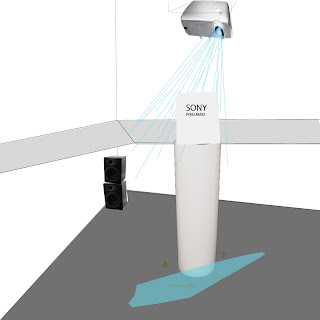PROPOSAL FOR INFINITY INTERNATIONAL

Snapshot as skeleton with blossom, 2010

Snapshot of hanging, 2010
The evolution of appropriation in the history of art has lead the viewer to contemplate subject matter and perspective through the guise of different and predominantly cutting edge mediums. I am interested in Second Life as a medium or platform for both art and social experimentation. Second Life embodies the self, as to explore one must be present in an avatar account, but free from any restrictions on that appearance. Fragmented from that avatar, as the human behind the avatar can view themselves while controlling them selves (ie. movement ect.). This free-ness allows an avatar to not exist in their own documentation. Making it possible to use Second Life solely as grounds for documentation of others, or of ones own sculpture, or architectural work. I am interested in including my image, and the many forms it takes.
To reinforce the importance of documentation it is worth considering that Second Life's unique scripting language 'Linden Scripting Language' or 'LSL' allows one to import 3D objects or 2D photos but any work created in SL can not be exported. This leaves documentation as the only way of exporting what happens in SL to the outside world. Which is really in sync with the effect increased internet use has had on the viewing of art and understanding of space as the composition of space in the documentation.

Afterthing, 2010

Venus Pose, 2010
Using my own avatar as subject the above image titled 'Afterthing' was posed in reference to Sherrie Levine's After Edward Weston. Levine, as with much of her work, has rephotographed one of Edward Weston's photos of his son's naked torso. Another documentation photo includes my own avatar Till Hollow and an avatar who I often collaborate with, Blossom Hydraconics, posing in the iconic Venus pose in front of an image of The Birth of Venus painting by Sandro Botticelli. The pose was a pre-set that we acquired for free. Second Life pre-set animations are interesting in their hyper-embodiment of popular culture as spelled out in categorical semiotics in the virtual realm. Or the pop-margin: art, specifically painting art, hair, bling, what is interesting or fetish worthy, death, hyper-real water and beaches. These two documentation photos represent the a world of possible permutations, a black-hole of appropriations manifested in SL, ripe for documentation, or performance beside, or real time tours of (a different form as exampled by Jon Rafman's Kool-Aid man, an ideal form --> tours as they escape art object in a very fresh way).
A third photo that I include in the post is documentation of an installation I encountered as a tourist in SL. I came across an open copy of F. Scott. Fitzgerald's The Great Gatsby, which as an iconic narrative and critique of the American dream, I was drawn to document its existence, even if its original placement was the result of a thoughtless prop res.

The Great Gatsby, 2010
The following videos that I included here represent my interest in the absurd, the occult, the superficial and the metaphoric potential latent in this incredibly open platform. These themes will likely drive my future explorations and fluid approach to documentation.
Video titles in order: Res Bling Then Put On --> Wear Til Done; Falling Potential in Second Life and Reverse Effect; Dance of Death: Water; With Leopard; Pre-set Dance on Grave























